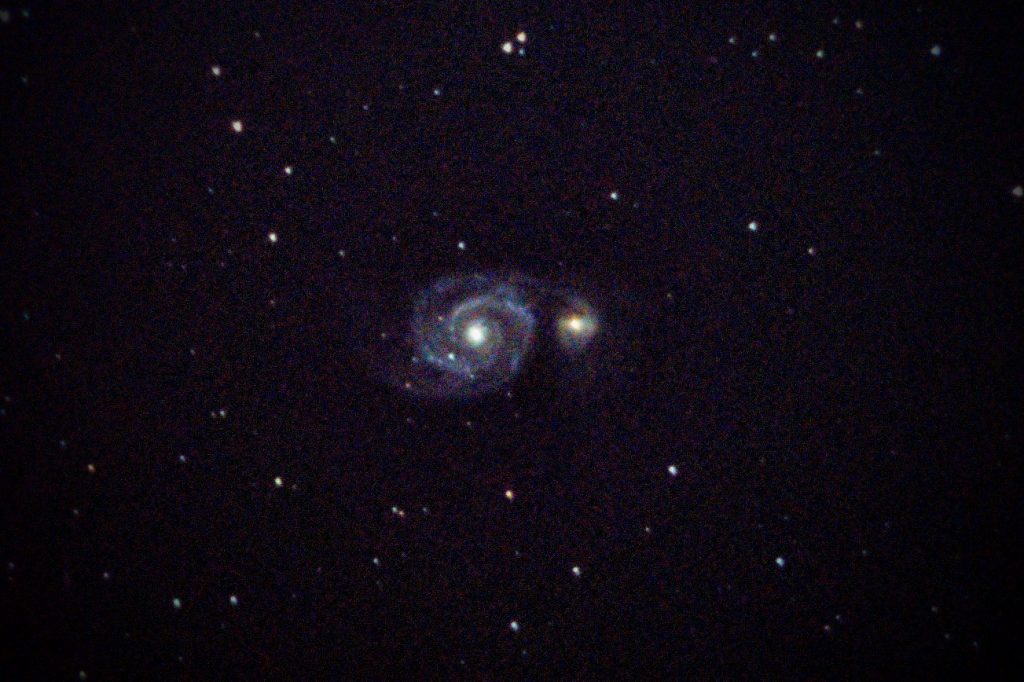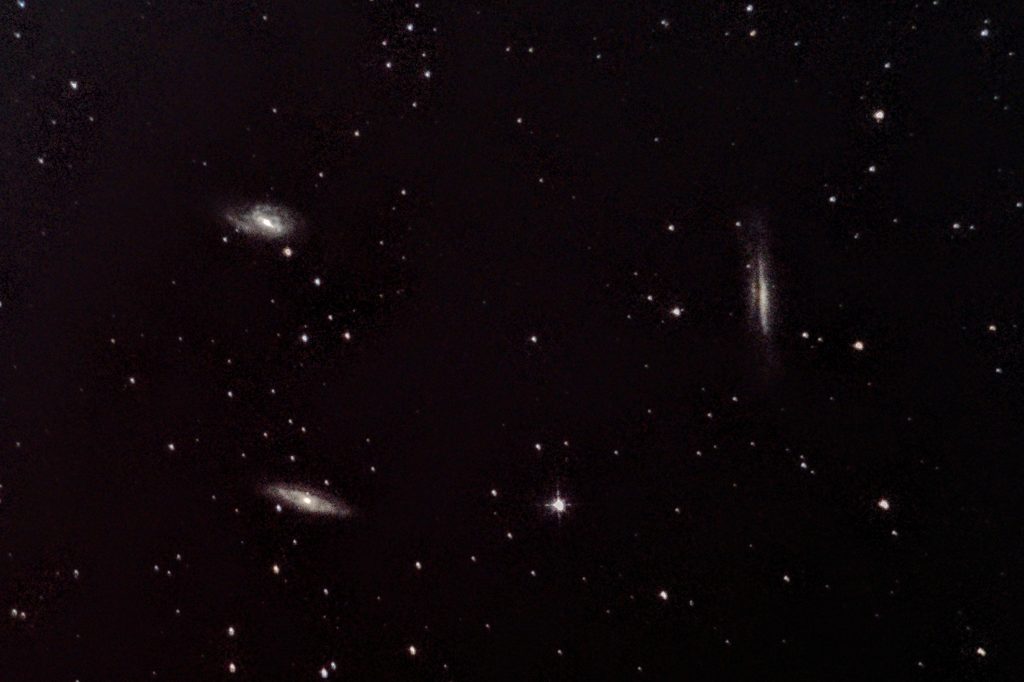Lashings of galaxies and a frozen tube

Absolutely fantastic night – much needed after months of cloud, but incredibly cold.
This was my first all-nighter this year – I’m getting too old for this. But, an absolute rush getting cracking with galaxy season.
The tube had completely iced all over when when I called it a day at sunrise.
M51 Whirlpool Galaxy
One of the best known galaxies, light from this spiral galaxy has travelled around 23 million light years to reach us. M51 can be found just to the right of the end of the tail/handle of Ursa Major.
The Leo Triplet/M66 Group (M65, M66 and NGC 3628)
These three galaxies are around 35 million light years away. They can be found below the hind legs of the Leo constellation (the Lion).
M64 Black Eye Galaxy
A spiral galaxy around 17 million light years away, found in the Coma Berenices constellation. A band of dark, absorbing, dust lays in front of the bright nucleus – giving it it’s distinctive appearance.
I’ve also included a marked up screen shot from Stellarium in case you want to find the targets.
The other image is a play with star trails on Arcturus (as Sirius was out of view). Just a bit of fun/practice shot – doing this with Sirius captures different colours from its emissions spectra and creates some pretty patterns.
Think I’ve finally cracked INDI/Ekos for calibration frames… lots of hours and data wasted figuring it all out – but all part of the fun and now I know it can all work smoothly. Trial and error did mean that by the time I got the flats and bias I’d poked the camera out of position, but really really pleased with these nonetheless.
Image details
Captured using INDI/Ekos, Canon EOS 6D, Astromaster 130EQ-MD (low prof. focuser).
Stacked with DeepSkyStacker, processed & sharpened in Registax 6.
All light frames 10s exposures, 40 bias, 30 flat and 30 dark frames – all ISO6400.
Whirlpool: 89 light frames – 15m 16s exposure.
Leo: 214 light frames – 36m 44s exposure.
Black Eye: 21 light frames – 3m 30s exposure.




